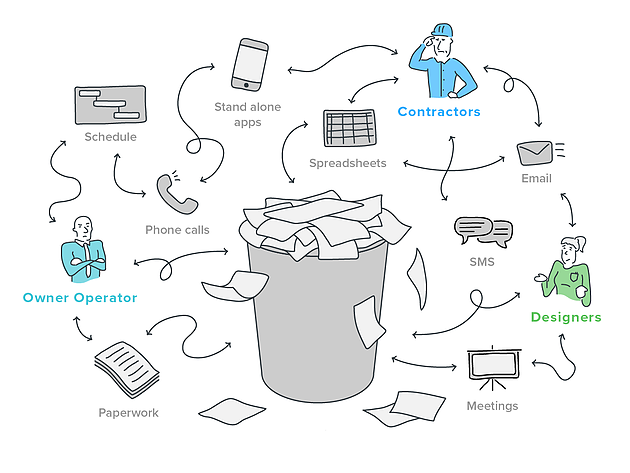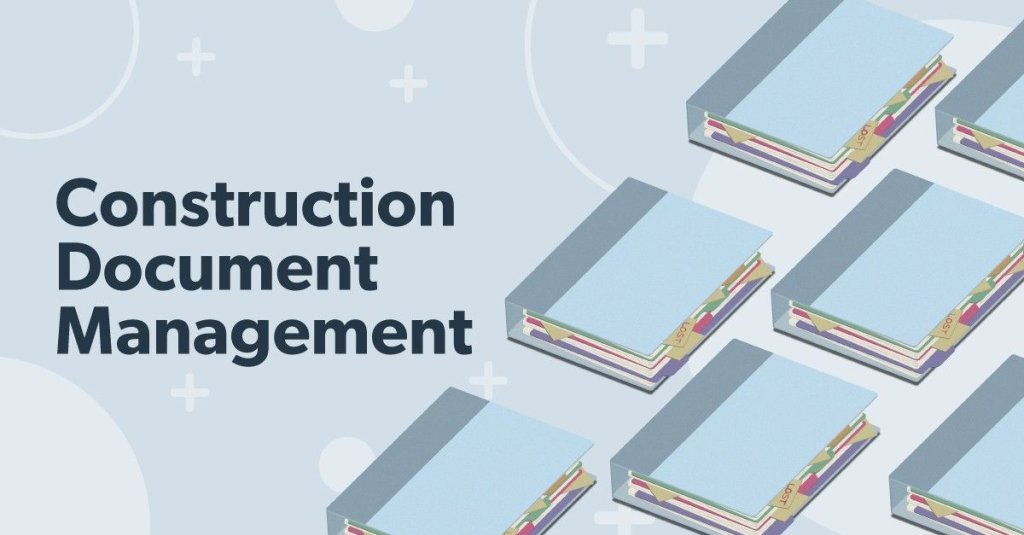Streamline Cooperation: The Power of Construction Document Management Solution
Streamline Cooperation: The Power of Construction Document Management Solution
Blog Article
Enhancing Process Effectiveness: Architect's Expert Techniques for Construction Record Monitoring
In the world of building design and construction, the precise management of documents stands as a cornerstone for project success. Engineers use different techniques to enhance process performance and improve building and construction file monitoring processes. From experienced organization methods to the integration of collective systems and the application of secure data monitoring services, engineers browse a complex landscape of tools and techniques. Nevertheless, among this intricacy, a choose couple of specialist methods have actually become important in maximizing operations performance. These techniques not just ensure smooth project development however also hold the essential to unlocking boosted productivity and accuracy in the complex world of construction file administration.
Key Document Company Strategies
When taking care of construction files, among the essential techniques that architects use is developing a organized and effective company system. This system usually includes categorizing files based on their type, such as drawings, specifications, contracts, and permits. By producing clear and unique categories, designers can promptly locate particular info when required, conserving time and decreasing mistakes in the construction process.
Within each category, designers even more arrange records by utilizing or developing subfolders numbering systems to signify variations or alterations (construction document management). This hierarchical framework ensures that the most relevant and present information is quickly available while maintaining a record of adjustments made throughout the project timeline
Additionally, architects typically make use of digital file monitoring platforms that use attributes like keyword search functions, version control, and gain access to constraints to boost organization and collaboration among project stakeholders. These tools simplify the document retrieval procedure, advertise real-time updates, and help with seamless interaction, inevitably adding to the general success of the building project.
Collaborative System Assimilation
To enhance file administration efficiency in building and construction jobs, architects seamlessly incorporate collective platforms to boost communication and improve sychronisation among project stakeholders. By leveraging collaborative systems such as project management software, cloud-based storage systems, and communication devices, engineers can develop a centralized center for all project-related files and interaction channels. These systems allow team participants to accessibility, review, and work together on files in real-time, decreasing delays and the danger of errors related to traditional file monitoring approaches.
Joint system integration also cultivates openness and responsibility within the project group, as all stakeholders have presence into the most up to date task updates and revisions. By streamlining interaction and document sharing, designers can make sure that all employee are working from the most current information, lessening the opportunities of misunderstandings or conflicts emerging due to out-of-date papers.
Furthermore, collaborative platforms allow smooth cooperation between architects, service providers, clients, and other job stakeholders, advertising an extra natural and reliable task workflow. By breaking down interaction obstacles and helping with details exchange, designers can drive performance and innovation in building tasks, inevitably resulting in successful task outcomes.
Version Control Finest Practices
Carrying out reliable variation control techniques is important for keeping record precision and uniformity in construction jobs. By developing a clear system for taking care of revisions, project teams can make sure that every person is functioning from the most up-to-date paperwork, minimizing the risk of errors and inconsistencies throughout the building phase.
Among the essential ideal practices for version control is to Learn More Here assign special identifiers to every file version. This can be attained by making use of a numbering system or day stamp that clearly indicates the order of revisions. By clearly labeling each model, employee can quickly track the development of the document and recognize one of the most recent version.

Automation Devices for Effectiveness

Paper control software, like Procore or PlanGrid, centralizes project documents, making it easily obtainable to all stakeholders. These platforms permit real-time collaboration, version control, and automated back-ups, protecting against information loss. Additionally, Structure Details Modeling (BIM) software program automates the generation of building drawings and makes sure that modifications are integrated throughout all related files.
Integrating automation tools with cloud storage look at this now space options additionally improves ease of access and security. By automating the paper management process, task teams can concentrate their effort and time on value-adding activities, inevitably enhancing efficiency and task end results.
Secure Information Management Solutions
Effectively protecting and handling job information is critical in the building industry to make sure discretion and stability throughout the task lifecycle. Building firms can utilize encrypted cloud storage space services to securely save and share job files with accredited personnel.
Additionally, making use of electronic civil liberties monitoring (DRM) tools includes an additional layer of safety and security by protecting against the unapproved distribution or duplication of project files. Routine data back-ups are vital to mitigate the danger of data loss due to unanticipated situations like hardware failures or cyber-attacks. Joint systems with built-in safety and security functions make it possible for seamless interaction and data sharing amongst task staff member while keeping data integrity.
Conclusion
In final thought, applying key record company strategies, integrating collaborative platforms, exercising version control ideal methods, making use of automation tools, and adopting protected information management options are important techniques for enhancing workflow efficiency in construction paper management. These professional strategies can streamline processes, boost interaction, make sure precision, and preserve data security throughout the building and construction job lifecycle.
In the realm of architectural design and construction, the careful administration of documents stands as a keystone for task success. These approaches not only make sure smooth project development but additionally hold the essential to opening improved efficiency and precision in the intricate realm of building and construction paper administration.
To optimize paper monitoring performance visit this site in construction jobs, designers flawlessly incorporate collaborative systems to boost interaction and improve control amongst job stakeholders. These systems enable team members to access, evaluation, and team up on files in real-time, decreasing hold-ups and the threat of mistakes associated with traditional paper management methods.
Utilizing automation tools in building and construction record management considerably improves effectiveness and streamlines processes for job groups. construction document management.
Report this page